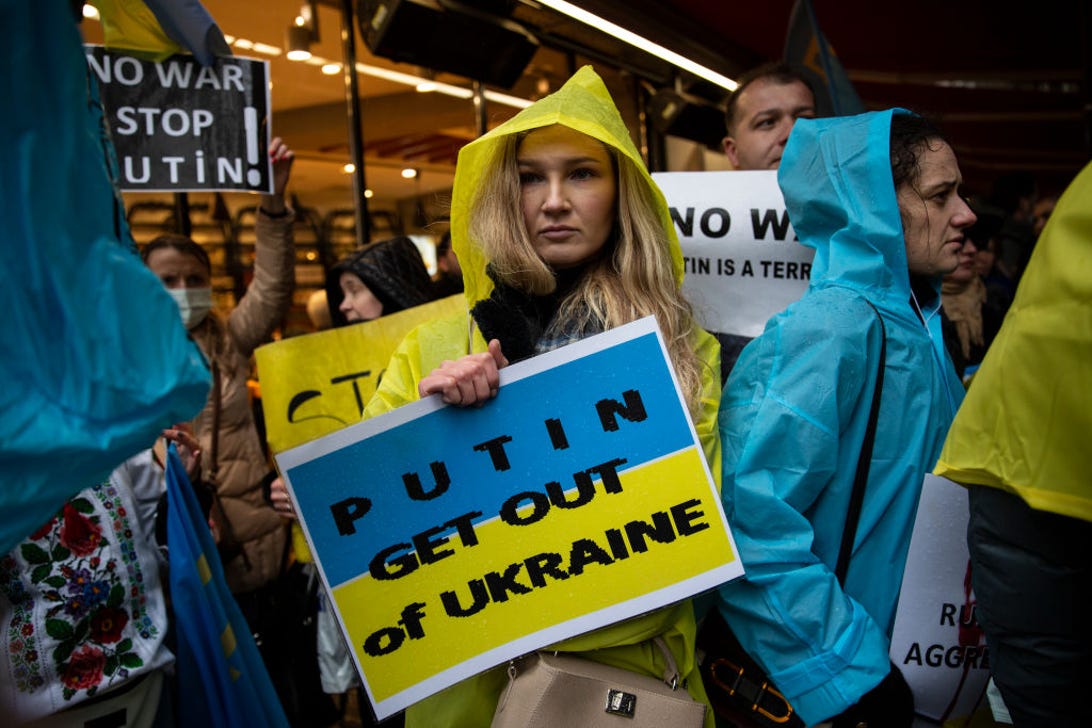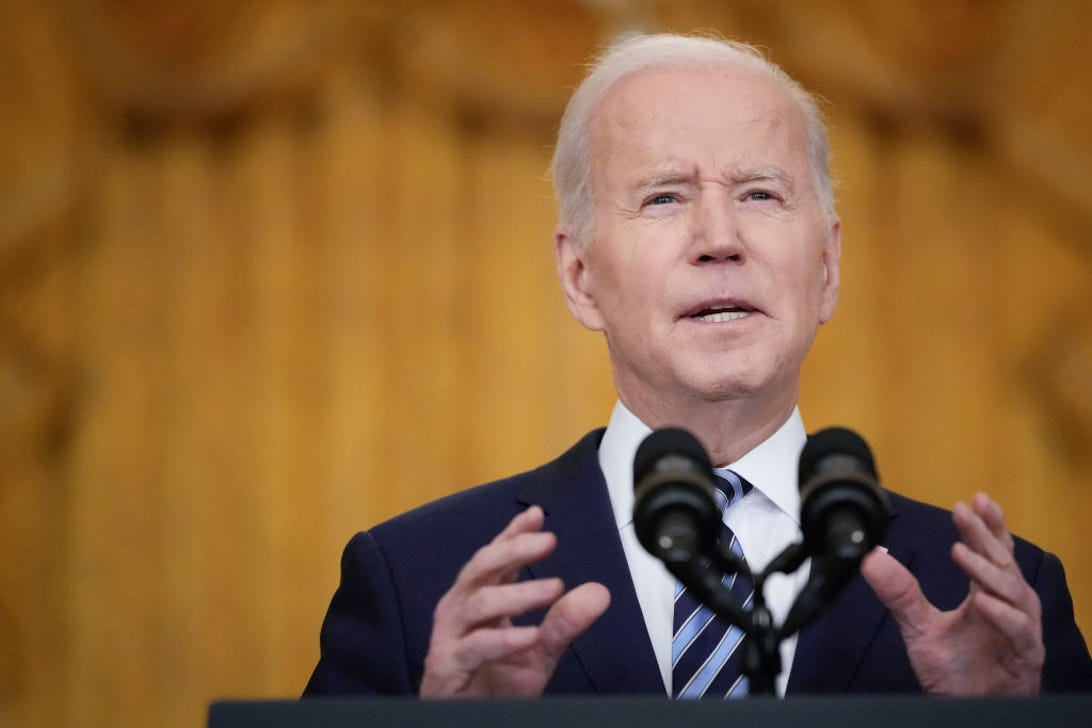
Protestors outside the Russian Consulate in Istanbul demonstrating against the invasion of Ukraine.
Cem Tekkesinoglu/dia images via Getty ImagesRussia’s invasion of Ukraine is already impacting gas prices in the US: As of Thursday morning, the national average gas price was $3.54 a gallon, according to AAA, compared to $2.65 this time last year.
Prices at the pump are at their highest in California, averaging $4.77 a gallon, followed by Hawaii, where they’ve reached $4.54.
Earlier on Thursday, crude oil — which is refined to make gasoline, heating oil, plastics and other petroleum products — rose above $105 a barrel for the first time since 2014.
Russia is one of the world’s largest producers of crude oil and natural gas, providing 10% of the global supply and roughly 40% for the European Union. Sanctions by the US and Europe will undoubtedly impact access to that supply, as will violence in Ukraine, a critical transit hub for oil and gas shipments.
Here’s what you need to know about how the Ukraine crisis is impacting gas prices, including options for offsetting rising costs.
For more, find out what Russia’s invasion means for the US economy and learn about cyberattacks against Ukraine and the threats to other countries
Where are gas prices headed?
Should the conflict in Europe drag on, average prices at the pump could easily hike up to $4 a gallon nationwide by early next week, DTN energy editor Brian Milne told MarketWatch.
When oil prices last climbed to $100 a barrel in 2014, gasoline prices ranged from $3.50 to $3.85 a gallon.


Energy analyst Dan Dicker told Yahoo Finance last week that, at $100 a barrel, the average price at a US gas station in 2022 would hit $5 a gallon.
But Dicker cautioned that the invasion of Ukraine could push the price of crude oil as high as $150 a barrel.
When crude oil prices last neared that benchmark, hitting $147.27 in July 2008, average prices at the gas station peaked at $4.10. That increase was spurred by a strike by Brazilian oil workers and threats to the oil supply from Nigeria and Iran.
This time, Dicker said, Americans could be shelling out $6.50 or $7 a gallon.
Does the US get oil from Russia?


Oil fields in Montebello, California. The US imports more crude oil than it produces, with Russia our third-biggest importer.
Frederic J. Brown/AFP via Getty ImagesWhile the US is the largest producer of crude oil and natural gas we’re also the largest consumer, producing over 18.6 million barrels a day while using over 20.5 million.
Last year, to make up the deficit, the US imported 8.5 million barrels of crude daily. In November, about 595,000 barrels per day, or roughly 7%, came from Russia — making it our third largest outside source after Canada and Mexico.
Sanctions against Moscow could reduce the availability of Russian crude in the US and cause prices of gasoline and petroleum products to rise.
What can the US do to offset rising gas prices?
President Joe Biden said on Thursday that he was developing a strategy to “blunt gas prices” in the face of Russian incursion.


President Joe Biden on Thursday announced severe sanctions against Russia in the wake of its invasion of Ukraine.
BRENDAN SMIALOWSKI/AFP via Getty Images“We’re closely monitoring energy supply for any disruption, and we’re executing a plan … toward a collective investment to secure stability in global energy supplies,” he said in a televised address. “I want to limit the pain the American people are feeling at the gas pump.”
On Thursday, Biden announced a series of severe sanctions against Russia, aimed at ceasing the incursion, which would help return oil and gas prices to typical levels.
Ramanan Krishnamoorti, a University of Houston energy expert, said the president could tap domestic oil reserves to offset rising prices.
“We have the Strategic Petroleum Reserve that’s available at the president’s hand. That’s a tool available in many of the biggest developing countries — China, India, Europe,” Krishnamoorti told ABC News. “They all have a petroleum reserve. If they open up the spigots there, that in the short term will alleviate fears in the market.”



